 Reflections on the Syrian Chemical Weapons Issue and the Possibility of Ending the Civil War
Reflections on the Syrian Chemical Weapons Issue and the Possibility of Ending the Civil War
by William R. Polk (Prof. emeritus, Univ of Chicago & ex-member of the Policy Planning Council of the United States Department of State)
September 15, 2013
Because so much of the information and comment in the media, particularly in America, is fragmentary, diffuse and even contradictory, I thought it might be useful to attempt to put together a more coherent account of how we interpret what we now know. Since most of the focus in government pronouncements and the media is on weapons and their use, I will here provide notes on (1) weapons’ variety, their characteristics, their cost and their availability; (2) a short history of chemical weapons;  (3) the Russian intervention; (4) why the Syrians have accepted the Russian proposal; (5) the prospects for ridding the area of the weapons of mass destruction; (6) the possibility of ending the civil war; (7) who the Insurgents are and what they want; and (8) predictable results of a collapse of the Syrian state.
(3) the Russian intervention; (4) why the Syrians have accepted the Russian proposal; (5) the prospects for ridding the area of the weapons of mass destruction; (6) the possibility of ending the civil war; (7) who the Insurgents are and what they want; and (8) predictable results of a collapse of the Syrian state.
- The Variety of Weapons and Their characteristics
Three sorts of weapons figure in the Syrian conflict: the first are “conventional” light and heavy weapons: rifles, machineguns, grenades and artillery.[1] They have done most of the killing in the civil war. Of an estimated 100,000 casualties, they have killed over 99 in each 100. Perhaps the best guess on who the casualties were comes from an Non-Governmental Organization based in London, the Syrian Observatory for Human Rights. It finds that 21,850 rebels fighters, 27,654 regular army soldiers, 17,824 militia fighters and about 40,000 civilians have been killed as of September this year.[2]
So far unused but prominent in any political calculation are nuclear weapons which are known as weapons of mass destruction (WMD). So far they are possessed only by Israel with which country Syria is at war. The third category of weapons, also regarded as WMD are chemical weapons. They figure in the inventory of several states including both Syria and Israel. These weapons are made of various forms of gas (mustard, which causes severe burns, and the nerve gases, Sarin, VX and perhaps others).
Weapons of Mass destruction are characterized by several common features. The first is that there is no effective means of protection from them. At the top end, a nuclear weapon, delivered by rocket or jet airplane cannot be detected or reliably disabled before reaching its target. Some chemical weapons do not even have to be delivered: they can be carried (as they were in the First World War) by wind or allowed simply to escape where they are to take effect. Gas masks were fabricated to guard against them over a century ago, but they offer only limited protection. Some gas compounds, particularly Sarin, can contaminate clothing and remain lethal long after the person removes the mask. Against white phosphorous, a particularly horrible form of napalm, there is no effective means of defense if the person is in the open.[3]
The second common feature of chemical weapons of mass destruction is that their impact is dramatic. Even threat of their use spreads terror not only among intended targets but among the population of wide areas. This feature is heightened by the fact that unintended victims usually have no warning. All weapons of mass destruction are horrible, but they vary widely in cost and effectiveness. Nuclear weapons are the most expensive and not only can kill all life in a given area but also leave behind contamination that can kill or maim those who survived the initial attack for decades or more. Even “lesser” nuclear weapons such as depleted uranium shell casing are believed to have resulted in greatly increased cases of cancer. So far as I have been able to find out, depleted uranium has not yet been used in Syria, but such shells are known to be in the inventory of some of the armies.
Chemical weapons have been described as “the poor nations’ weapons of mass destruction.” Gas can be manufactured relatively cheaply and in what are relatively speaking rudimentary laboratories. According to a Russian study, the only publically available investigation, gas has been used several times in the Syrian war, once, the Russians assert, by the rebels in or near Aleppo. We do not yet, as of this writing, have the official UN study of the gas attacks near Damascus. Indeed, we do not yet know precisely how many people were killed. The numbers are variously reported: by Médecins Sans Frontières (355), French intelligence (281), British Intelligence (350), the insurgent “Syrian National Coalition” (650) and the American government (1,429).
Mention of the relatively small number of Syrian casualties caused by gas is not to excuse its use; on the contrary, it is to question why Western statesmen did not regard the death of the nearly 100,000 killed by convention weapons a cause for action. But the gas issue at least gives us a place to start ridding the Middle East of weapons of mass destruction.
If chemical weapons are relatively unimportant in the Syrian Civil War, why did the Syrian Government manufacture and keep them? The answer, of course, is that they were not intended to be used in a civil war; rather, they were intended to deter an Israeli attack and to balance against Israel’s own inventory of nuclear and chemical weapons.[4] Like nuclear weapons, those states that still have poison gas regard it as a means of deterrence rather than offense.[5] This, of course, was the position of the United States on poison gas. It is perhaps worth pausing on that point since the statements by American officials will have been considered by other nations in the light of American actions. So a bit of history:
2. A Short History of Chemical Weapons
The only nation to use poison gas during the Second World War was Japan, but the United States and other Allied governments feared that the Nazi regime might opt to do so as its defeat neared. Germany indeed developed and manufactured Sarin and other particularly lethal agents. So the United States also began to develop and manufacture them. In 1943, it shipped mustard gas to Europe. The ship carrying the gas was bombed and sunk by the Luftwaffe in Bari on December 2. Some 62 merchant seamen were killed by the escaping gas. Then, after the war ended, the US Army began to experiment with captured German gas. To gage its effect, the Army exposed hundreds of thousands of American soldiers.[6] As I mentioned in a previous essay,[7] when I was a member of the Policy Planning Council and was studying weapons in the Middle East, I was given a briefing on chemical weapons at Fort Meade. I was so revolted by the videos I was shown that I wrote President Kennedy arguing that we must end the program and give up chemical weapons. Nothing was done until November 1969 when President Nixon unilaterally renounced first use of them and ordered the destruction of the then huge US stockpile of some 31,500 tons. In 1975 the US adhered to the Geneva Protocol on chemical and biological weapons. Thereafter, it continued destroying weapons, but in 1986, President Reagan restarted Sarin gas production when he was advised that Soviet Union was moving toward gas warfare planning. Nine years later, under President Clinton, the US Senate ratified the Chemical Weapons Convention.
This Chemical Weapons Convention of 1997 remains the standard against which issues of potential gas warfare are to be judged. As of September 2013, 190 states had ratified the convention; Syria is not a party to the Convention while Israel and Myanmar (Burma) have signed but not ratified it.
Ratifying the Convention legally obligated the United States to complete the destruction of its stockpile within a decade. It did not do so and made use of an automatic extension of five years. The extension ran out in April 2012. Today, the United States is in violation of the treaty as it still has approximately 3,000 tons of Sarin, VX and Mustard Gas. Presumably it has been delayed by strategic, safety, environmental and fiscal considerations. The program will cost perhaps $35 billion.
Use of chemical weapons in the Syrian conflict has been a matter of much speculation and controversy. The mandate of the UN inspectors does not require or perhaps even allow them to answer the question of who employed chemical weapons last month, but possibly they will be allowed to answer that question indirectly. That is, if the gas was of “military grade,” then presumably the rebels would not have had access to it although one allegation is that they may have received the gas that was used from a foreign military source; if, on the other hand, the gas was “home made” — and there have been several recent allegations of attempts to purchase from abroad[8] the raw materials from which Sarin is made — then presumably it was not from the Syrian army depot. Thus, hopefully, at least some of the contention over who did what to whom may be resolved in the report of the UN inspectors.
3. The Russian Intervention
Like the United States, Russia has a perceived national interest in the politics of the Middle East. The American interest is usually seen as having five components – access to energy on acceptable terms, protection of the forces it has committed to wars in Iraq and Afghanistan, prevention of the spread of nuclear weapons into hostile hands, prevention of the spread of terrorism against America or American targets and the protection of Israel.
While I am not privy to the deliberations of this generation of Russian strategists, I twice lectured at the then Soviet Academy of Science’s premier “think tank” on world affairs, the Institute of World Economy and International Affairs and thus developed some sense of how Russian strategists see the world. My hunch is that they would describe their national interests in the Middle East as having these components.
First, unlike the United States, Russia has a large indigenous Muslim population. Leaving aside the Central Asian republics, which are almost entirely Muslim and in whose affairs the Russian state is and will remain heavily involved, about 1 in 6 Russians is a Muslim. Thus, Russia must be and is deeply concerned that events in the Middle East do not “infect” Russian domestic politics and specifically that the violent segment of the Middle Eastern Muslim community does not further inflame Muslim separatism in Russia. This is a particular worry for the Russians in their Chechnya “federal subject.”
The Russian government, like all governments, is also concerned with prestige. Particularly after the implosion of the Soviet Union following its defeat in Afghanistan,[9] prestige has dwindled and restoring it must be a serious concern. (More pointedly, it is crucial in the survival of political leaders.) Russia wants and will pursue the role of a major world power; it may never again be one of two, but it can aspire to being (along with China and India) one of four.
The Russians also have “security” and commercial interests such as the port in Syria they are building for their Mediterranean naval operations and as an outlet to the Mediterranean for energy exports.
So Syria is both a danger and an opportunity for Russia; it is foolish to write off its interests, as some have done, as merely an emotional “blowback” from its defeat in the Cold War. No less than the United States, it has interests that will continue to guide its policy. It is in this light that we should see the Russian proposal in Syria.
As President Vladimir Putin has written,[10] “a strike [on Syria] will result in more innocent victims and escalation, potentially spreading the conflict far beyond Syria’s borders. A strike would increase violence and unleash a new wave of terrorism. It could undermine multilateral efforts to resolve the Iranian nuclear problem and the Israeli-Palestinian conflict and further destabilize the Middle East and North Africa. It could throw the entire system of international law out of balance.”
Mr. Putin went on to say that the forces opposed to the Syrian government include groups designated by the United States as terrorists and include “hundreds of militants from Western countries and even Russia [who] are an issue of our deep concern. Might they not return to our countries with experience acquired in Syria. After all, after fighting in Libya, extremists moved on to Mali. This threatens us all…[But] If we can avoid force against Syria, this will improve the atmosphere in international affairs and strengthen mutual trust. It will be our shared success and open the door to cooperation on other critical issues.”
As of this writing, we do not know precisely the dimensions of the Russian proposal. The broad outline, however, appears clear and simple: Syria would reveal and then in due course turn over to some recognized authority, under the supervision of either or both the United Nations or Russia, its chemical weapons inventory. Since the inventory is presumably both large (to deter Israeli attack) and housed in many locations (to survive Israeli attack) “neutralizing” it will be a lengthy process. Judging by the American experience, it may last 20 or more years and, by the terms of the Convention, would be legally allowed to take place for at least 15 years. Thus, implicit in the Russian proposal is a willingness to assume a long-term role in Syrian and, by extension, Middle Eastern affairs.
Playing this role would presumably require a large presence of both military and civilian Russian officials as well as UN staff and UN-designated contingents from other countries. These groups would inevitably have to work together to accomplish the basic mission and to maintain themselves in the midst of a dangerous civil war. Moreover, they would have to create supply lines as many of their necessities are now and will continue to be severely restricted in many of the areas in which they will have to operate. I would guess that the numbers are likely to be 5-10 thousand Russians and perhaps twice that number of UN-designated peacekeeping forces from third countries. Estimates of the costs have not yet been publically revealed. However, they are unlikely to be less than $20 billion. Presumably the Russian General Staff and the Soviet Academy are now at work refining those estimates.
4. Why the Syrians Have Accepted the Russian Proposal
President Asad informed the United Nations on September 10 that Syria would sign the 1997 Chemical Weapons Convention and forwarded to New York the preliminary documents. Then, speaking on Russian television, he said that his government would begin providing information on its chemical weapons a month after adherence. In what will probably, to judge from the history of US-Soviet arms control negotiations, be a long series of points of disagreement among the three parties, US Secretary of State John Kerry immediately demanded faster action. That may not be possible as is evident in America’s own performance to implement the terms of the Convention. So rather than a sigh of relief, the Russian proposal and the Syrian acceptance have begun in controversy.
What is President Bashar al-Asad committing the Syrian government to do and why did it accept the Russian proposal?
If the Russians have to put military or security forces into the country to protect their teams engaged in destroying nuclear stockpiles, as I assume they will have to do, the Syrian military could, conceivably, reduce its forces. I doubt that this will seem attractive to the regime because it is both heavily dependent upon the military to maintain itself in power in the midst of the civil war and because the economy is not now able to absorb any significant infusion of job-seekers. Regime policy will also, of course, continue to be shaped by fear of hostilities with Israel. So the government is unlikely to reduce its forces. What the government could do is to concentrate its forces more effectively to deal with the rebels. Thus, it seems reasonable to believe that the regime might welcome the Russian offer on this ground alone.
But there are other grounds for the Syrian government to accept the Russian offer. The first, obviously, is that it is likely to have made an imminent and devastating American attack unlikely or even impossible. Press reports suggest that the mood in Damascus already reflects this new optimism. There is, as yet, only a negative response from the titular leaders of the opposition, but since the opposition is internally deeply and bitterly divided, it seems likely that some of the more moderate or conservative of its hundreds of component groups, may reconsider their positions as the Russians, the UN and perhaps others begin to employ natives to assist in their arms control operations.
Another reason for the Syrian government to accept the Russian proposal is that it should lift external threats for a lengthy period, perhaps years. Once the program gets under way, it would be difficult or impossible for the United States or Israel to intervene militarily. It is difficult to exaggerate the importance of this change: Syrians governments have lived literally under the gun for half a century. Periodically, Israel has violated Syrian air space and bombed Syrian installations. With a Russian force in residence and forced to protect its widely scattered personnel and a significant UN peacekeeping force interspersed among the Russians, the government can to some degree discount external aggression.
Covert subversive activities are likely, of course, to continue. The government has not been able to stop them and is unlikely to do so in the future. But the Syrians have learned to live with this threat, and it is probable that the Russian presence will bring the concomitant of security assistance. This is almost certain to include training, provision of or stationing in Syria of more sophisticated weapons and some sharing of counterintelligence.
Yet another reason for the Syrian government to approve Russian involvement is less dramatic but perhaps more crucial. Syria is desperately short of food, particularly wheat, If I were a Russian planner I would see augmenting the food supply of the Syrian people as a major opportunity and if I were a Syrian policy planner, I would see it as vital. It will be limited and probably short-term. Russian farmers have suffered from drought in the last several years but expect to be able to export about 10 million metric tons of wheat this coming year; Syria has not been able to export any of its wheat crop, its major foreign exchange earner, since 2008. Syria still faces a strategic problem since water supplies are declining with no likelihood of improvement in the foreseeable future – but the value to the Syrian government of even short term – tactical — food aid in the next few years cannot be overestimated.
5. The Prospects for Ridding The Area of Weapons of Mass Destruction
If there is a “silver lining” in the Syrian crisis, it could be that it would awaken the world to the dangers of weapons of mass destruction (WMD) and that serious moves will be taken at least to diminish them. Let us be as precise as possible on both the dangers and the possible remedies.
As an “insider” in the Cuban Missile Crisis, I believe I can claim the right to say once again that the existence of WMD anywhere are a menace to people everywhere. In the midst of the Missile Crisis and ever since I have thought of the words of John Donne. We cannot repeat them often enough:
No man is an island, ?Entire of itself, ?Every man is a piece of the continent, ?A part of the main.? If a clod be washed away by the sea,? Europe is the less.? As well as if a promontory were.? As well as if a manor of thy friend’s? Or of thine own were: ?Any man’s death diminishes me, ?Because I am involved in mankind,? And therefore never send to know for whom the bell tolls; ?It tolls for thee.
We – Syrians of both camps, Russians, Americans, Israelis, Iranians and others – are part of the main. In the Cuban Missile Crisis we knew that those distinctions were not operative. Any use of WMD would have tolled the bell for all mankind.
There were then many reasons not to listen. There always will be. And the bell may not sound loudly enough to awaken us. But we need to awaken and to keep searching for ways to effect its message.
Why do nations have WMD? The simple answer is that they are afraid of one another. That is immediately clear in the context of Syria: the Syrians are afraid of the Israelis and the Israelis are afraid of the Syrians and other Arab states. Fear is often irrational, but it can be subjected to reason. Or, at least, can be fitted into a restraining matrix. Is this conceivable in the Middle East?
I think it is. Syria has moved to give up its piece of what one of our own “big bomb” strategists called “the delicate balance of terror.” If fully carried out, that will be a somewhat irrational move. Any Syrian government will seek compensation. Compensation can come in one of several ways. Russia can provide Syria with guarantees. If they are prudent, the Syrians will not place complete confidence in this or any other foreign guarantees. This is because governments change and even the interests of existing governments change so that commitments made at one time may dissolve at another. Russia may also provide Syria with advanced conventional arms. But what are advanced today are soon obsolescent and eventually become obsolete. So more permanent compensatory moves must be made if we wish to diminish our dangers over a long term. What might they be?
The obvious answer is in moves that could be made by the Israeli government. It is the major holder of WMD in the Middle East. But why should Israel give up any advantage? The only politically conceivable reason would be that it reckons such a move would be in its own interest? Would it?
Consider an answer to that question in this sequence: when Israel moved to acquire WMD in the 1960s, its conventional forces were already stronger than those of its Arab neighbors, but, in the Israeli calculus, only marginally so. Today they are very much stronger and, with American assistance, getting technically more advanced. But at least some of the Arab countries and Iran are moving toward sufficient technological skill and manufacturing capability to manufacture nuclear weapons. Others, like Saudi Arabia and some of the Gulf states may, potentially, be able to buy what they cannot now build. So, while possession of WMD once gave Israel security, sooner or later emphasis on WMD could be a source of insecurity. Feeling threatened by Israeli power, other states may accelerate their move to match it. And the only feasible or proximate means to do so is by acquiring WMD. In short, more countries could acquire the capacity to destroy Israel. So, while it maintains its overwhelming conventional military power, Israel would be wise to begin to consider some alternative to WMD, just as we have done vis-à-vis Russia.
6. The Possibility of Ending the Civil War
While the destruction of chemical weapons will have little or no direct effect on the civil war, the indirect results can be significant. As I mentioned above, the rebel leadership immediately condemned the Russian proposal. Particularly the more radical groups take President Putin at his word: Russia will throw its weight behind stopping the war by supporting the Syrian government. As mentioned above, he warned of the spread of terrorism and tied it to the insurgents. While supporting the insurgents, in general, President Obama in his September 10 “address to the Nation on Syria” acknowledged that “It’s true that some of Assad’s opponents are extremists.” Thus, while the Western media has been almost wholly committed to the rebels and their causes, I think we will look back on these early moves as the beginning of a change in the perception of the insurgency. The insurgents appear to share the same perception.
How significant will that change of perception be? It is of course impossible to judge with any precision, but it should be noted that it began even before the Russian move. Whereas until the last few weeks, almost all media reports have emphasized the brutality of the Asad regime and its henchmen, stories have begun to appear of acts of terror, murder and vandalism by some of the rebel groups.[11] The narrow terms of reference of the UN investigation will probably not add much to what is already known, but the lengthy documentation the Russians have gathered on actions by the insurgents may add to the momentum behind the trend. And some of the enthusiasts for the rebel cause and the most prominent self-proclaimed expert on Syria,[12] have lost the powerful leverage they had on American governmental and public opinion just a short while ago. The latest polls show almost 3 out of 4 Americans believe the current threat against the Syrian government is “unwise.”[13]
It has surprised me that President Obama and the conservative Gulf states have managed to keep both feet firmly planted in opposite camps: while generally opposing Muslims of all varieties and singling out some of their most significant groups as terrorists affiliated with al-Qaida, they have supported them with weapons, money and training.
To my mind, more significant is the general recognition that, just as in Libya where we similarly supported a rebellion against a government,[14] the rebels have little or no capacity to form a stable successor government if, with American, European and conservative Arab governments, they manage to overthrow the Asad regime. In contrast, as I have pointed out, the Russian position is straightforward: they are worried about the possible effect of the Syrian Muslim rebels on the 1 in 6 Russians who is a Muslim and some of whose relatives is now engaged in Syria. So, understandably, while still locked in a struggle against their own dissidents in Chechnya, the Russians aim to weaken insurgents in Syria.
The Russian position comes down to the simple argument that the Syrian government must be enabled to survive. The American position is more vague but repeated statements and the work of the CIA to equip and train the rebels suggest that the Obama Administration is determined at least not to allow the Syrian government to win. Does this mean that the Administration wants the rebels to win? It appears so. In this event, what we have is a proxy war imposed on top of a civil war, and that could go on for a generation or more.
But, speaking as an old policy planner, it does not seem to me that there is a clear strategy that could define what would be meant by the rebels winning. I propose to deal with this conundrum in my next essay. First, let us look at the insurgents.
7. Who Are the Insurgents and What do they Want?
The short answer is that despite frequent assertions to the contrary, we still know little about the insurgents. They have not one but hundreds – by some accounts as many as 1,200 — conflicting organizations of which only one, Jabhat an-Nusri, seems to have organizational and doctrinal cohesion. The guess is that the total number of combatants may be upwards of 70,000 to 100,000. While I have no access to intelligence reports my study of what I have called Violent Politics[15] suggests that the most radical groups usually win in the internecine struggle. Thus, my bet would be on the Jabhat an-Nusra, a self-proclaimed affiliate or partner to al-Qaida, rather than on the diffuse and disorganized Free Syrian Army.
The Free Syrian Army is presumably largely made up of Syrian farmers who lost their their livelihood in the several-year-long drought that devastated the farm lands. Now out of work and destitute, they are the foot soldiers of the insurgency.
Apparently different from them in motivation and objective are the largely foreign contingent of Jabhat an-Nusra. What little is known of them suggests that they came to Syria because they believe that its struggle is their struggle. And, as I have written previously,[16] they have been inspired by the Egyptian theologian Sayid Qutub to aim not only at a “free” Syria but a free Muslim community, an ummah or even a sort of restored caliphate. Is theirs a feasible goal?
8. Predictable Results of a Collapse of the Syrian State
American policy was aimed, apparently without adequate attention to the consequences, at the destruction of the Asad regime. Russian policy, as I have laid out, aims in the other direction, the preservation of the Syrian government more or less as now constituted. At the present time, the Russian policy is in the ascendant, but there are powerful forces in America, Western Europe and the Middle East behind the American initiative. I will now suggest what might be the result of each line action. I begin with the Obama objective.
The Obama administration seems to believe that some sort of amalgamation of the rebels and the government can take place; yet, at the same time, it has constantly emphasized its charge that the Asad regime is criminal and must be degraded or replaced. I have yet to see any indication of who could effect its demise and on what terms how such a successor could make a deal with the insurgents. Much blood has been spilt and the desire for vengeance is apparently very strong among both government forces and the rebels. While it is never wise to say that the two sides cannot be reconciled, an amalgamation seems to me to be the least likely outcome.
More likely, if the central government is destroyed, is some sort of balkanization. That is to say, a de facto break up of the country into several ethno-religious blocs.[17]
Consider this prediction briefly in terms of the Syrian historical experience: Under the Ottoman empire, what is now Syria was divided into provinces (Turkish: pashaliks) so there would seem to be a precedent for some form of division, but this misleading for two reasons: first, the Ottoman system was politically, ethnically and religious permissive in ways that are alien of modern statecraft. In the four centuries of Ottoman rule, each community ran its own affairs with the state interfering only to ensure the collection of taxes. Contribution by individuals to the community tax was levied by the leaders or councils of each community, not by the government. Moreover, what happened inside each community was considered its, rather than the empire’s, affair. So Jews ran Jewish schools; Druze ran Druze schools; Alawis ran Alawi schools; and the various sects of Christians each ran their own schools. Each community took care of its own health needs and generally administered its own law and custom. That lax system of government is mandated in the Quran. But, after the imposition of the Western concept of the state, such community structure (Turkish: milliyet) is only a distant memory. Moreover, even the religious fundamentalists and certainly the more radical insurgents apparently no longer feel governed by the Quranic injunction to allow non-Muslims to live by their own codes and in peace.
Whether or not such a system might be theologically or politically acceptable today, it would not work in practice since the several communities have become much more mixed than in Ottoman times. To judge by their proclamations, at least the more radical part of the insurgency would try to impose upon all the Syrians a centralized Islamic legal and cultural system. In areas under such control, the members of the previously “protected” communities will either emigrate, convert or be eliminated. We see and hear signs of this already in reference to the Alawis and the Christians.
Thus, almost certainly, a “balkanization” of Syria will greatly add to the number of internal and external refugees. Moreover, in that part of Syria that falls under the control of the Jabhat an-Nusra, strenuous efforts will be made to carry a jihad further afield. Initially, a common cause will be found with the Iraqi Sunni community which is restive under the yoke of the American-imposed and Iranian-supported Shia regime. Further ties will be taken up with radical Muslim groups in Libya, Egypt, the Gulf states, Afghanistan, Pakistan and even further afield. In short, the turmoil we are now seeing will be greatly increased and more widely spread.
Contrariwise, the results of Russian policy are likely to be an increase in the power and determination of the Syrian government. It is no more democratic than the rebel groups, but it is more ethnically tolerant: although Alawi dominated, it includes even at the top level numbers of Muslims and Christians. Whether or not this liberal or tolerant aspect of the regime continues will depend, I suggest, largely on how long the war continues, how bitter it becomes and whether or not serious efforts are made to improve the economy. Thus, much will depend on the Russian program.
Whether or not the aim of the Russian government is humanitarian is beside the point: with its back protected, this or any other Syrian government will naturally seek to achieve its own salvation, security and “victory.” Such, after all, is the aim of nationalism.
This is all short or middle term; the long-term needs of the Syrian people for peace and security, for jobs and food, and for hope will go unmet as long as the civil war lasts. The long-term needs to cope with a rising number of stomachs to be fed as resources of good land and water decline will not even be addressed much less solved. The bill to put Syria back together again can only be guessed. My hunch, based on what we have seen in Iraq, is on the order of a trillion dollars. And I see no sources for such an amount. But, if the war is not stopped and stopped soon, the amount needed will multiply.
And Syria is only the focal point of these problems. A dynamism has been set in motion that will affect all Syria’s immediate neighbors first and then others. If the war continues, the regional prognosis can only be chaos. Among the first to be affected will be Lebanon which, always a fragile conglomeration, can easily fall back into civil war; then Turkey, apparently so strong and stable, will come under increasing pressure from the Kurds who will have been encouraged by their new autonomy in Syria. Their challenge will likely increase the rigidity and oppressiveness of the state. Jordan, after half a century, must have nearly used up its nine lives; and the Palestinians, having effectively lost what is left of their homeland, are likely to be driven away yet again. Not to go on, let me just predict that the already unstable area will throb with anger, frustration, armed conflict, terrorism and revanchism. Even those who wish to support Israel must realistically consider how this gated community can find happiness in such a slum.
I end with a teaser: as I used to do for our government, I am now at work on a policy paper in which I will address what might be done to head off or at least ameliorate these dire projections.
William R. Polk , Sunday, September 15, 2013
(Published with permission of the author)
[1] I leave aside land mines as they do not appear to have been used in the Syrian conflict. of them, the so-called improvised explosive device (IED) was first reported in use by Afghan tribesmen in the 19th century and is common in guerrilla warfare. A more sophisticated version was laid by the British and German armies during the Second World War Unlike other conventional weapons, it is “passive;” that is, it can “lie in wait” for a footfall for decades. In North Africa alone it was believed to have killed about 20,000 people.
[2] Huffington Post, September 12, 2013, Joshua Hersh, “Syria Death Toll a Grim Reminder of War’s Two-Sided Casualties.”
[3] The American army used both napalm and white phosphorous extensively in Vietnam and Iraq. The photograph of a still burning young girl running down the road had the same effect on Americans in the 1960s and 1970s as the sight of gassed children in Syria this year, a feeling of revulsion. US Secretary of State John Carrey called it “obscene.”
[4] Although “undeclared,” Israel is known to have not only upwards of 400 nuclear weapons but a robust program of chemical and biological warfare manufacture and training. It is known to have imported chemicals used for Sarin nerve gas from the United States.
[5] This was not true until fairly recently. The British government considered using poison gas on German civilians during the Second World War and it was not until 15 years later that most states agreed to start destroying stocks of poison gas.
[6] US Senate, Staff Report for the Committee on Veterans’ Affairs, December 8, 1994. The report states that “For at least 50 years, DOD[Department of Defense] has knowingly exposed military personnel to potentially dangerous substances often in secret…without their knowledge or consent.”
[8] The latest I have seen is in The Los Angeles Times of September 13, 2013, Patrick J. McDonnell: “Syrian rebel groups sought sarin gas material, Turkish prosecutors say.” The suspected groups were Jabhat an-Nusra and Ahrar as-Sham.
[9] On which the reader may wish to see my essay, “The Russians Try to ‘Regime Change’ Afghanistan,” in my forthcoming volume, Humpty Dumpty: The Fate of Regime Change.
[10] The New York Times, September 11, 2013, “A Plea of Caution From Russia.”
[11] Including an attack on the Christian village of Maloula whose inhabitants still speak the language Jesus is thought to have spoken, Aramaic. This episode came on top of disturbing accounts of reports that the rebels planned to kill or drive away not only the members of the deviant Muslim sect, the Alawis, but also Syrian Christians. Even more graphic were photographic records of rebels murdering unarmed and naked Syrian soldiers and even eating the heart of a murdered civilian.
[12] Elizabeth . O’Bagy, who was identified by Secretary Kerry and Senator McCain as well as The Wall Street Journal, was found to have lied about her academic credentials (claiming to hold a doctorate in Middle Eastern studies) and to have hidden the fact that she was employed by a pro-rebel lobbying group while pretending to be an independent journalist.
[13] The Reason-Rupe September 10, 2013 National Survey.
[14] The Independent, September 12, 2013, Patrick Cockburn, “Special report: We all thought Libya had moved on – it has but into lawlessness and ruin.”
[15] The title of my book on insurgency, guerrilla warfare and terrorism (Harper Collins, 2007 and 2008).
[16] “The Syrian Maelstrom’” March 4, 2013, available on my website, www.Williampolk. Com will be included in my forthcoming book, Humpty Dumpty: The Fate of Regime Change.
[17] Not only under the Ottoman empire but from the end of the first Islamic century, what is now Syria, then the heartland of the Umayyad Caliphate, lived a “relaxed” version of Islam.
 ISIS assigned a sixteen year old as military emir of Azaz, north of Aleppo. An ISIS prisoner from Asifat al-Shamal, the militia that ISIS defeated to take Azaz, was able to escape from his captors. He says the 16 yr old ISIS Emir regularly tortured the prisoners.
ISIS assigned a sixteen year old as military emir of Azaz, north of Aleppo. An ISIS prisoner from Asifat al-Shamal, the militia that ISIS defeated to take Azaz, was able to escape from his captors. He says the 16 yr old ISIS Emir regularly tortured the prisoners.






























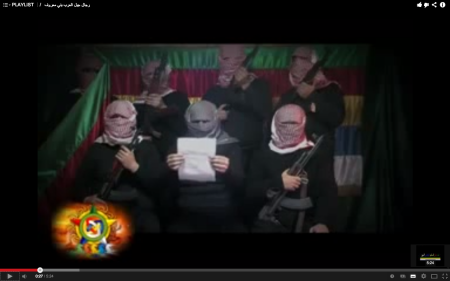

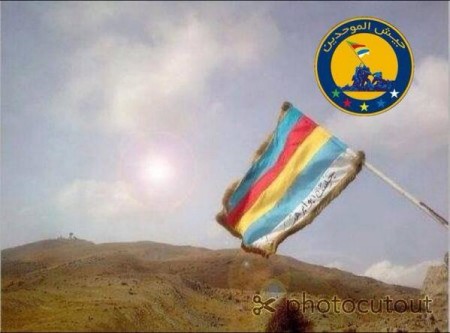
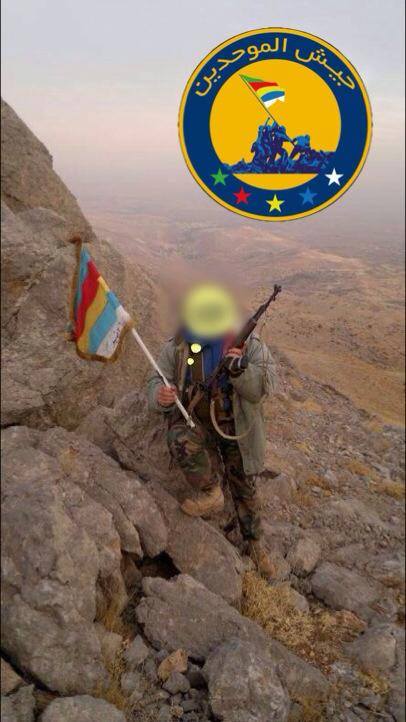
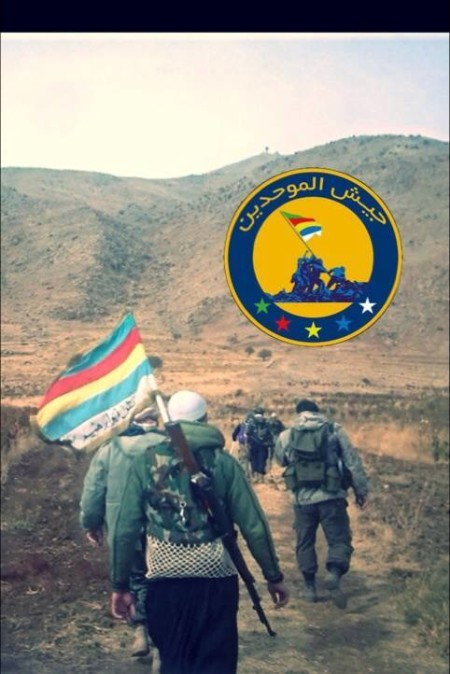
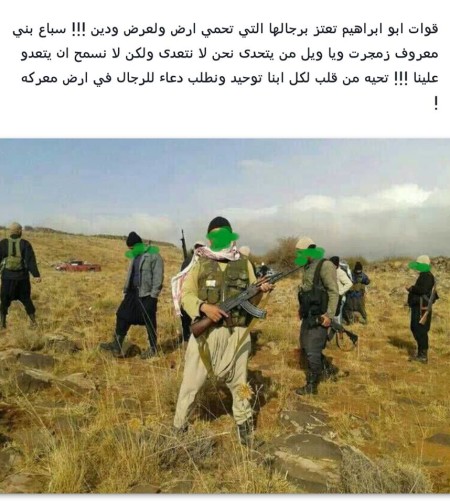


















 by Andrew Cunningham with
by Andrew Cunningham with 







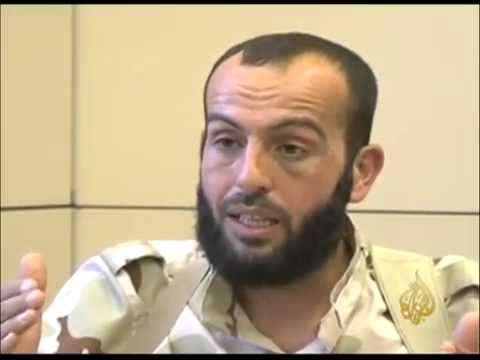

 Reflections on the Syrian Chemical Weapons Issue and the Possibility of Ending the Civil War
Reflections on the Syrian Chemical Weapons Issue and the Possibility of Ending the Civil War (3) the Russian intervention; (4) why the Syrians have accepted the Russian proposal; (5) the prospects for ridding the area of the weapons of mass destruction; (6) the possibility of ending the civil war; (7) who the Insurgents are and what they want; and (8) predictable results of a collapse of the Syrian state.
(3) the Russian intervention; (4) why the Syrians have accepted the Russian proposal; (5) the prospects for ridding the area of the weapons of mass destruction; (6) the possibility of ending the civil war; (7) who the Insurgents are and what they want; and (8) predictable results of a collapse of the Syrian state.
 by Aymenn Jawad al-Tamimi for Syria Comment
by Aymenn Jawad al-Tamimi for Syria Comment




 Figure 6: Abu Rahmat al-L?b?, a Libyan fighter for ISIS.
Figure 6: Abu Rahmat al-L?b?, a Libyan fighter for ISIS.













